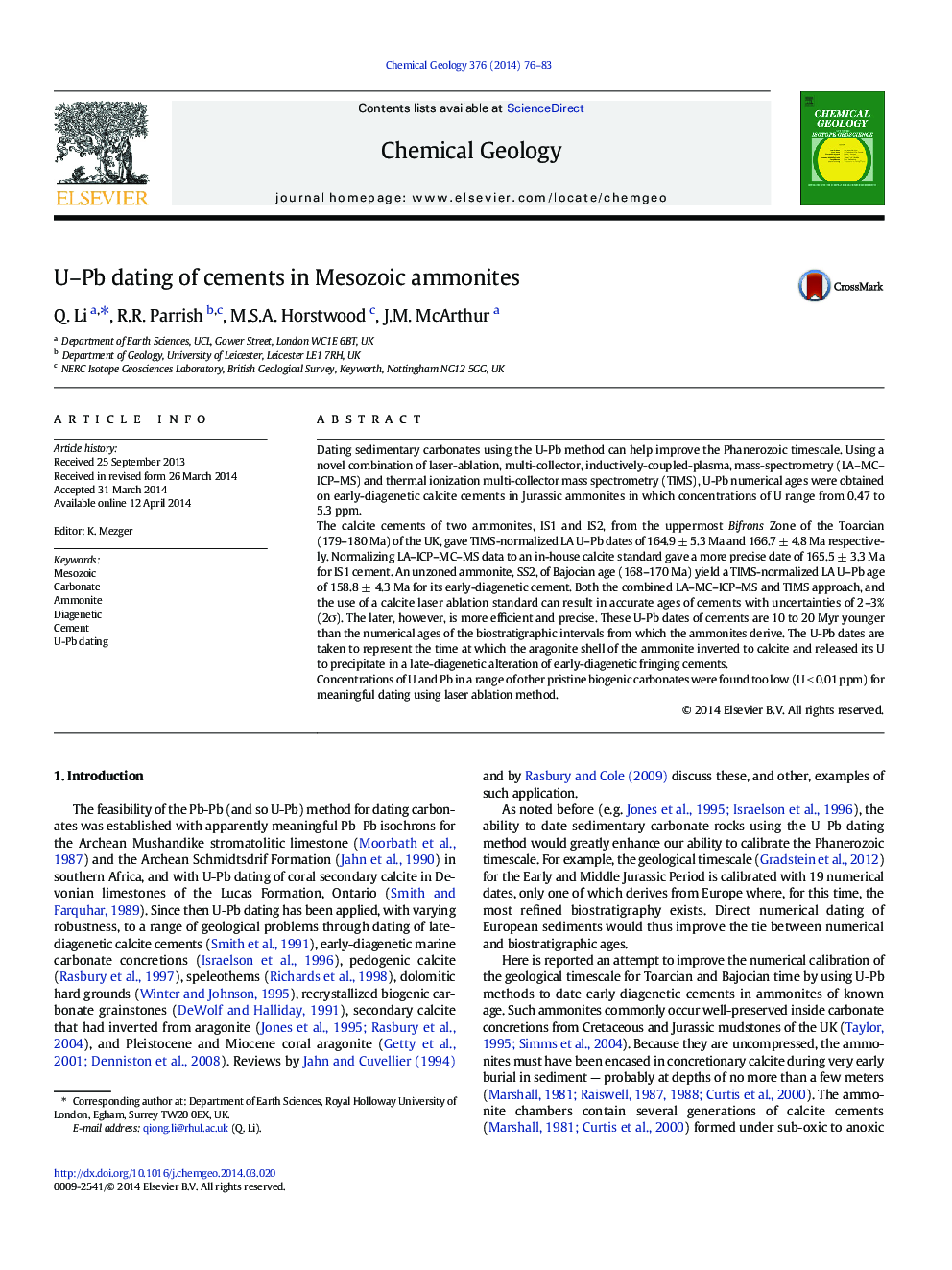| Article ID | Journal | Published Year | Pages | File Type |
|---|---|---|---|---|
| 6436654 | Chemical Geology | 2014 | 8 Pages |
â¢Primary biogenic calcite contains < 0.01 ppm of U, so it is unfeasible for U-Pb dating.â¢Common Pb anchored TIMS U-Pb data yield U-Pb dates for diagenetic calcite cements.â¢TIMS-normalized LA U-Pb data give precise U-Pb dates for the diagenetic calcite.â¢Calcite standard normalized LA U-Pb data give the best U-Pb dates for the cements.â¢Ammonite cement U-Pb ages record the time of aragonite inversion to calcite.
Dating sedimentary carbonates using the U-Pb method can help improve the Phanerozoic timescale. Using a novel combination of laser-ablation, multi-collector, inductively-coupled-plasma, mass-spectrometry (LA-MC-ICP-MS) and thermal ionization multi-collector mass spectrometry (TIMS), U-Pb numerical ages were obtained on early-diagenetic calcite cements in Jurassic ammonites in which concentrations of U range from 0.47 to 5.3 ppm.The calcite cements of two ammonites, IS1 and IS2, from the uppermost Bifrons Zone of the Toarcian (179-180 Ma) of the UK, gave TIMS-normalized LA U-Pb dates of 164.9 ± 5.3 Ma and 166.7 ± 4.8 Ma respectively. Normalizing LA-ICP-MC-MS data to an in-house calcite standard gave a more precise date of 165.5 ± 3.3 Ma for IS1 cement. An unzoned ammonite, SS2, of Bajocian age (168-170 Ma) yield a TIMS-normalized LA U-Pb age of 158.8 ± 4.3 Ma for its early-diagenetic cement. Both the combined LA-MC-ICP-MS and TIMS approach, and the use of a calcite laser ablation standard can result in accurate ages of cements with uncertainties of 2-3% (2Ï). The later, however, is more efficient and precise. These U-Pb dates of cements are 10 to 20 Myr younger than the numerical ages of the biostratigraphic intervals from which the ammonites derive. The U-Pb dates are taken to represent the time at which the aragonite shell of the ammonite inverted to calcite and released its U to precipitate in a late-diagenetic alteration of early-diagenetic fringing cements.Concentrations of U and Pb in a range of other pristine biogenic carbonates were found too low (U < 0.01 ppm) for meaningful dating using laser ablation method.
